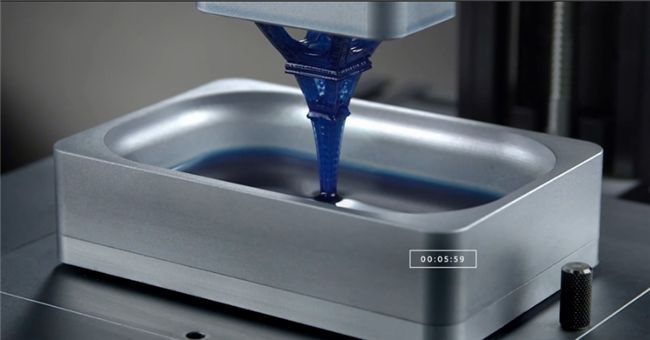
Privacy statement: Your privacy is very important to Us. Our company promises not to disclose your personal information to any external company with out your explicit permission.
Additive manufacturing refers to the digital manufacturing technology based on the discrete-stacking principle of similar mathematical calculus, which is realized by the three-dimensional data driving of parts and computer automatic control to realize precise and controllable, layer-by-layer increase of materials to directly manufacture parts. Compared with the reduction of materials and other materials, the additive manufacturing is mold-free and tool-free, but it is not just a new manufacturing process, but a new round of technological revolution and industrial revolution will change the way human production is produced. And an important engine of life and a disruptive technology system. This subversiveness is reflected in, in addition to the advantages brought by this new manufacturing process, and more importantly, it realizes the integration of structural design, high-performance material preparation, complex component manufacturing, and macroscopic structure. Design and microscopic material preparation bring revolutionary changes.

The additive thinking behind additive manufacturing technology is a revolution in design. It completely opens up the design shackles, DFM (manufacturing), DFA (assembly) and other traditional design methods based on reduced material manufacturing, and the designers can really Returning to user needs, performing functional-oriented design (DFF) or additive-oriented design (DFAM), in terms of value, function, and energy, makes design and process, design, and manufacturing no longer a causal and sequential relationship. It is a mutually energetic living system that realizes low-cost innovative design and rapid manufacturing of large/ultra-large components or structural systems, complex/ultra-complex components or structural systems, multi-variety and small-volume individualized products in a natural way. Extraordinary structures enable extraordinary functions.
After many years of practical application experience based on system engineering, product forward design and simulation analysis, combined with the profound application of the additive industry, Anshi Asia Pacific has developed an innovative business model based on the overall optimization of resources, and proposed a forward design and The high-end R&D and advanced manufacturing solutions for the manufacturing of materials provide solutions that can be implemented in the design and manufacturing integration of “Made in China 2025”.

First, the technical architecture
The technical framework for high-end R&D and advanced manufacturing solutions based on forward design and additive manufacturing is based on the general framework of the modern science discipline system, including the foundation of the “three-level bridge” proposed by Qian Xuesen under the guidance of the system perspective in the early 1980s. Discipline level - systems engineering, mathematics, physics, materials science, etc., information enabling environment - data collaboration for digital main lines and digital hygiene, cloud manufacturing based on big data and Internet of Things, technical discipline layer - TRIZ and Technological innovation and management, topology optimization, engineering simulation, knowledge engineering, engineering technology layer - forward design consulting system based on system engineering, product material process integration design methodology and process system combination configuration Advanced manufacturing process integration preferred consulting system, advanced material preparation research and development service system, engineering practice layer - industrial product-oriented solution system (such as aircraft, aircraft engine, automobile, mold, etc.), industrial chain-oriented solution system ( Public institutions such as entrepreneurs, consumers, higher education and vocational training Industry, cultural and creative, construction, etc.), for industrialization and information technology products and systems (process and material equipment, software tools and platforms, etc.), the core content is:

Second, the process system
The overall flow of the design for additive manufacturing is shown in Figure 2. This process covers the requirements analysis, architecture design, detailed design and other processes of the product. In practical applications, this guiding process needs to be combined with the system engineering process framework of the dual V model. Figure 3 shows the design flow for additive manufacturing based on the systematic design of the German standard mechanical product VDI2221. It can be considered that this is the actualization of the VDI2221 in the development stage.
Supporting the above-mentioned top-level processes for additive manufacturing design are several specialized sub-processes, such as MBSE-based system modeling, topology optimization and simulation and creation design integration process (Figure 4), and the creation design process for additive manufacturing. (Figure 5) and so on.

The design process of additive manufacturing based on VDI2221 is shown in Figure 3 below:

February 18, 2024
November 23, 2023
November 23, 2023
Envoyer à ce fournisseur
February 18, 2024
November 23, 2023
November 23, 2023

Privacy statement: Your privacy is very important to Us. Our company promises not to disclose your personal information to any external company with out your explicit permission.

Fill in more information so that we can get in touch with you faster
Privacy statement: Your privacy is very important to Us. Our company promises not to disclose your personal information to any external company with out your explicit permission.